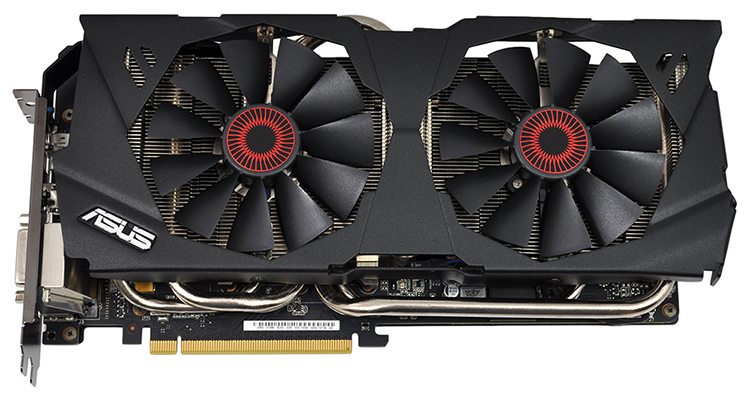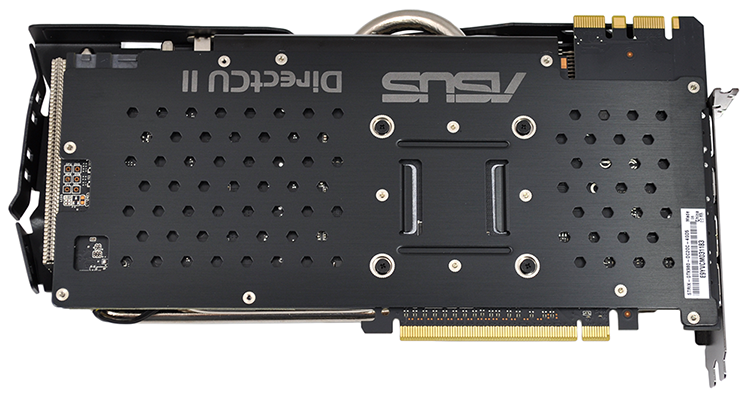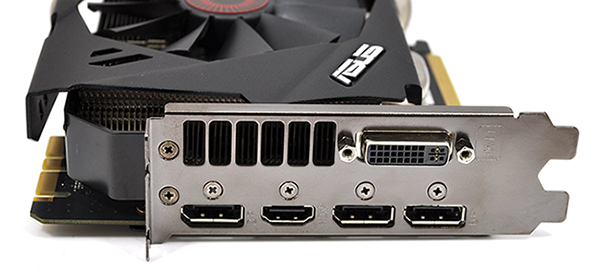Introduction
It's a good time to be an Nvidia partner. The graphics specialist has caught the eye of PC gamers with the launch of the GeForce GTX 980 and GTX 970, and our sources at various UK retailers tell us the new cards are selling like hotcakes.
But if past experiences are anything to go by, not all partner cards are created equal. In the ultra-high-end space, Asus has often led the way in terms of build quality and premium design, so it's natural to assume that the company's GeForce GTX 980 Strix will be a popular choice among enthusiast users.
Currently available for £500, the GTX 980 Strix - or GeForce GTX 980 DirectCU II OC Strix, to give you it's complete name - fetches a £75 premium over a reference board, making this one of the dearest GTX 980s that money can buy.
If you've read our review of the GTX 970 Strix, you should have a good idea of what to expect. In keeping with the 970 counterpart, the premium 980 Strix is a beast of a card measuring 288.6mm x 134.4mm x 40.9mm in size. Though served in a traditional dual-slot form factor, it is significantly taller than Nvidia's reference design.
The above-average dimensions allow for a cooler that, frankly, makes a mockery of the GTX 980's 165W TDP. Twin fans are sat atop a massive heatsink that Asus claims is 220 per cent larger than reference, and it's bolstered by 10mm-thick copper heatpipes.
Build quality, as you'd expect, is very good and Asus includes red or black stickers as part of the bundle. These can be attached to the blank areas of the shroud for added effect, though we reckon the card looks menacing as is.
A key selling point for the 980 Strix is that the design offers 0dB Fan Technology. Playing on the efficiencies of Nvidia's Maxwell architecture, this means that the fans will remain off until GPU temperature hits roughly 65ºC.
Asus's card is robust whichever way you look at it. The rear of the PCB is reinforced with a full-size backplate, the GPU is fed by a 10-phase power design, and as expected on a card of this expense, top-notch components are used throughout - these include super-alloy capacitors and chokes.
Given the level of extravagance, you might have expected sky-high shipping frequencies, but that isn't the case. Asus has the 980 Strix core clocked at 1,178MHz, representing a mild 4.5 per cent increase over Nvidia's default 1,127MHz. Memory frequency, meanwhile, remains untouched, with the 4GB frame buffer operating at an effective 7,012MHz.
Clock speeds are conservative - rival cards at this price point offer base clocks in excess of 1,200MHz - and though the card will boost beyond what's listed on the box, Asus's premium offering won't be the fastest GTX 980 on store shelves.
However, that's not necessarily a bad thing. Asus is trying to minimise noise on its high-end cards, and rather than cranking-up the frequency for the sake of a few extra frames per second, it is banking on the fact that the GTX 980 Strix should be one of the quietest high-end cards to date. And truth be told, those who demand maximum clocks will take it upon themselves to manually push the card to its limit - there's plenty of headroom, as we'll demonstrate a little later in the review.
Elsewhere, dual SLI fingers are present for multi-GPU setups, and power is sourced from eight-pin and six-pin PCIe connectors. Last but not least, Asus sensibly chooses not to alter Nvidia's default array of outputs. This means five choices - DVI, HDMI 2.0 and a trio of DisplayPort 1.2 - four of which can be used concurrently.
It's an impressive card, but the question that may be troubling would-be-buyers is whether or not the GTX 980 Strix is worth the £200 premium over its GTX 970 namesake? We now have benchmark results for them both, so let's find out exactly how the duo compare.













